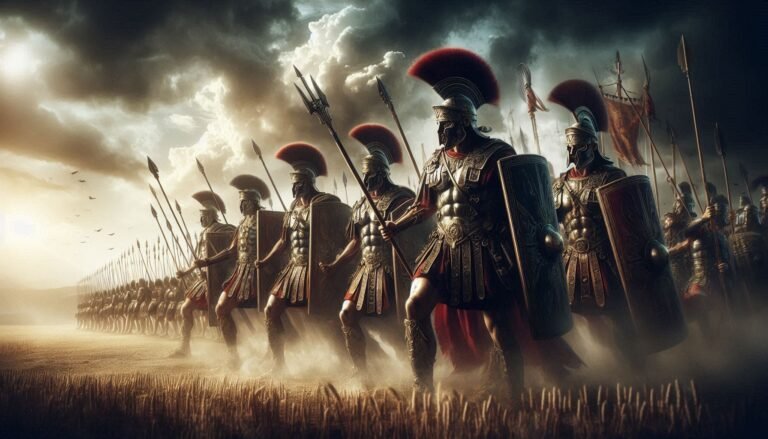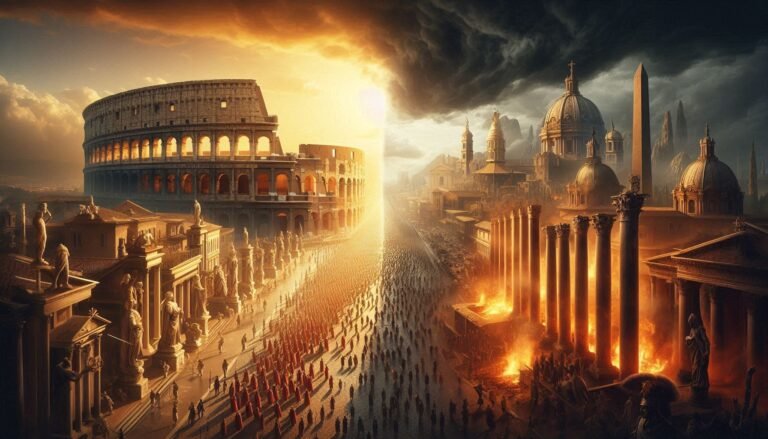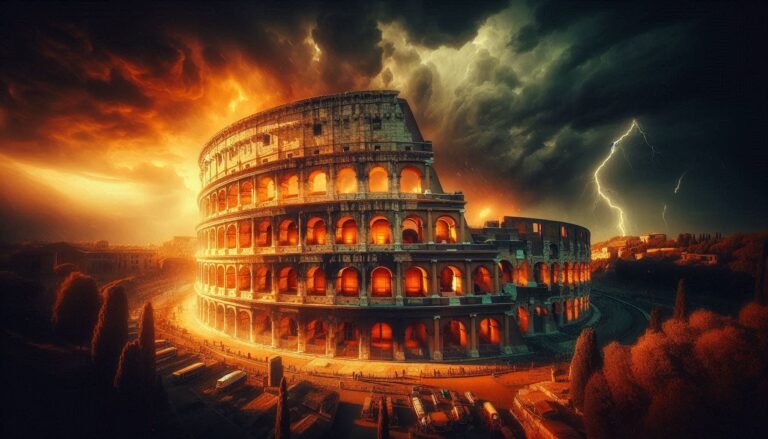The gladiators of ancient Rome have long captured the imagination of historians, filmmakers, and audiences alike. These fierce warriors, who battled in the grand arenas of the Roman Empire, lived a life of brutality, hardship, and honor. The spectacle of gladiatorial combat was not just entertainment but a reflection of Rome’s values, politics, and social structure.
But what was life really like for these fighters? Who were they, how were they trained, and what fate awaited them in the blood-soaked sands of the Colosseum? Let’s delve into the fascinating and violent world of Rome’s gladiators.
Origins of Gladiatorial Combat
The tradition of gladiatorial combat is believed to have originated with the Etruscans, an ancient civilization that preceded the Romans. The Etruscans practiced munera, or ritualistic combats, as part of funeral ceremonies. These battles were thought to honor the deceased and ensure their journey to the afterlife.
The Romans later adopted and expanded upon this practice, turning it into a grand public spectacle. By the time of the Republic (509–27 BCE), gladiatorial games were no longer just private funerary events but massive public displays of power, often sponsored by wealthy elites or politicians to gain favor with the masses.
The Life of a Gladiator
Who Became a Gladiator?
Gladiators came from a variety of backgrounds. While some were prisoners of war or condemned criminals, others were slaves purchased for combat. However, not all gladiators were unwilling participants—some free men volunteered, drawn by the promise of wealth, fame, and the possibility of winning their freedom.
The social stigma surrounding gladiators was complex. While they were seen as low-status individuals, they were also admired for their bravery and fighting skills. Successful gladiators could gain celebrity-like status, much like modern-day athletes.
Training and Daily Life
Once selected, gladiators were sent to a ludus (gladiator school), where they underwent rigorous training under the supervision of a lanista, the manager and trainer of the school. Some of the most famous gladiator schools were located in Capua, Pompeii, and Rome.
Training was brutal, focusing on endurance, combat techniques, and discipline. Gladiators were trained in different fighting styles depending on their body type, skills, and weaponry. Some of the most famous gladiator types included:
- Murmillo – Heavily armored with a large rectangular shield and a short sword (gladius).
- Retiarius – Fought with a trident and net, wearing minimal armor.
- Thraex (Thracian) – Wielded a curved sword and carried a small shield.
- Secutor – Designed to fight the retiarius, wore a rounded helmet and carried a sword and shield.
Gladiators followed strict diets rich in barley, beans, and grains, which helped build muscle mass. They also drank a special calcium-rich tonic made from ashes to strengthen their bones.
The Spectacle of Gladiatorial Combat
The Arena: A Stage for Blood and Glory
The most famous gladiatorial arena was the Colosseum in Rome, also known as the Flavian Amphitheater. Holding up to 50,000 spectators, it hosted deadly battles, wild animal hunts, and even mock naval battles.
The day of the games followed a set schedule:
- Morning events – Wild animal hunts (venationes) featuring trained hunters or condemned criminals fighting exotic beasts like lions, tigers, and elephants.
- Midday executions – Criminals and prisoners were put to death in theatrical, often gruesome ways.
- Afternoon gladiatorial contests – The highlight of the event, where the most skilled and famous fighters took center stage.
Before the battles began, gladiators would enter the arena and salute the emperor or sponsor with the famous phrase: “Ave, Imperator, morituri te salutant!” (“Hail, Emperor, those who are about to die salute you!”).
Life or Death? The Fate of Gladiators
Contrary to popular belief, not all fights ended in death. Gladiators were expensive investments, and their owners preferred them to survive and fight multiple times. However, if a fight did reach a decisive moment, the editor (game sponsor) or the emperor could decide the fate of a fallen gladiator.
- Thumbs up or down? The exact gesture used by the crowd to indicate mercy or death remains debated. Some sources suggest a “thumbs down” meant mercy, while an exposed thumb (symbolizing a sword) meant execution.
- If spared, a gladiator could return to fight another day.
- If executed, it was often done with a ritualistic final strike called “iugula”, where the victorious gladiator would deliver a death blow to the fallen opponent.
Those who fought bravely could be awarded a rudis, a wooden sword symbolizing freedom, allowing them to retire from the arena.
The Most Famous Gladiators
Spartacus: The Rebel Gladiator
Perhaps the most famous gladiator of all time, Spartacus was a Thracian warrior who was enslaved and forced to fight. In 73 BCE, he led a massive slave rebellion against Rome, gathering an army of escaped gladiators and slaves. Although his forces defeated several Roman legions, the rebellion was eventually crushed, and Spartacus was killed in battle.
Flamma: The Reluctant Champion
A Syrian-born gladiator, Flamma won 34 battles and was offered freedom multiple times, yet he refused and continued fighting. His skill and dedication made him a legend in the arena.
Commodus: The Gladiator Emperor
The Roman Emperor Commodus (161-192 CE) took his love for gladiatorial combat to an extreme—he fought in the arena himself, often arranging staged victories to boost his image. His obsession with being a “gladiator-emperor” ultimately contributed to his downfall and assassination.
The Decline of Gladiatorial Games
As the Roman Empire declined, so did the gladiatorial games. Several factors contributed to their end:
- The spread of Christianity, which opposed the brutal bloodsport.
- Economic decline, making the games too expensive to maintain.
- The banning of gladiatorial combat by Emperor Honorius in 404 CE, following the famous event where a Christian monk, Telemachus, attempted to stop a fight and was killed by the angry crowd.
Legacy of the Gladiators
Though the age of gladiators ended, their legend continues to inspire books, films, and television series. Their resilience, skill, and sacrifice make them enduring figures of courage and spectacle in history.
The sands of the Colosseum may have been washed away by time, but the echoes of the arena warriors still ring loud. They were more than just entertainment—they were symbols of survival, resistance, and the brutal reality of life in the Roman Empire.
Would you have survived as a gladiator?



